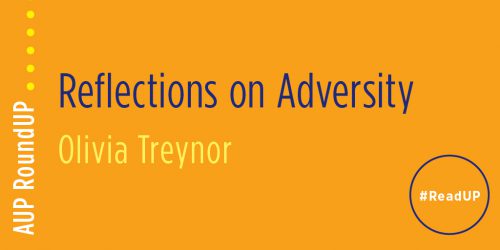University Press Roundup

Welcome to our weekly roundup of the best articles from the blogs of academic publishers! As always, if you particularly enjoy something or think that we missed an important post, please let us know in the comments. (And look back at our University Press Roundup Manifesto to see why we do this post every Friday.)
Recently, Beacon Press’s blog published an interview with Temple University journalism professor Lori L. Tharps, author of Same Family, Different Colors: Confronting Colorism in America’s Diverse Families. In this book, Tharps investigates the politics of skin color through compiling and analyzing the experiences of mixed raced families. Her interview illuminates our understanding of colorism, “the preference for or presumed superiority of people based on the color of their skin,” and highlights its role in different communities. Tharps advises readers to combat colorism not with colorblindness but with an appreciation for the diversity of skin tone. “Different just means different, not better or worse,” says Tharps.
In a Johns Hopkins University Press blog post, Benjamin L. Castleman, assistant professor of education and public policy at the University of Virginia and author of The 160-Character Solution: How Text Messaging and Other Behavioral Strategies Can Improve Education, presents creative approaches to increasing the rate of college graduates. According to Castleman, assisting students in dealing with college complexities, such as course requirements and financial aid deadlines, is crucial. To effectively do so, it’s important to communicate through platforms used by the typical college student. Castleman includes text messaging and online orientation as examples of solutions that have clarified the college experience. “To increase student success in college, we need strategic, low-cost interventions that meet students where they are and support them to make active and informed decisions,” he states.
The stigmatization of surrogacy was the topic of a recent Princeton University Press blog post by Katharine Dow, a research associate in the Reproductive Sociology Research Group at the University of Cambridge and author of Making a Good Life. “Surrogate motherhood has a bad rep, as a murky business far removed from everyday experience,” says Dow, who examines surrogacy from a historical lens. Surrogacy’s association with exploitation is contextualized, as Dow recounts the first attempt at commercial surrogacy in 1985. This blog post encourages readers to acknowledge the intense decision-making processes undergone by both parents and surrogate mothers. We must remain critical of surrogacy as a technology; however, Dow warns us against blaming individuals for surrogacy’s flaws.
To honor this year’s National Hispanic Heritage Month (September 15-October 15), University of Washington Press’s blog shared an excerpt from Bracero Railroaders: The Forgotten World War II Story of Mexican Workers in the U.S. West, by Erasmo Gamboa, professor of American ethnic studies at the University of Washington. Gamboa’s book speaks to the varying experiences of both men and women in the bracero railroad program, and in doing so, commemorates the history of Hispanic and Latina/o Americans in the United States. The featured portion on University of Washington Press’s blog focuses heavily on the influential role that women played with regards to the bracero program.
In light of Rosh Hashanah taking place this week, an excerpt from the book From the Jewish Heartland: Two Centuries of Midwest Foodways by Ellen F. Steinberg and Jack H. Prost is available on University of Illinois Press’s blog. In this book, Steinberg and Prost discuss the historical roots of Jewish culinary tradition in the Midwest through analyzing recipes. This excerpt focuses on the sweet potato, which is “plentiful and cheap” during Jewish New Year in the month of September. The post also explains the importance of the sweet potato during Jewish holidays like Rosh Hashanah, as “sweet foods symbolize hope for a sweet new year.” A recipe for Carrot Tzimmes is included.
This week, New York University Press’s blog, From the Square, shared a post offering an inside look into the book After Life Imprisonment: Reentry in the Era of Mass Incarceration, by Marieke Liem, Senior Researcher and chair of the Violence Research Initiative at Leiden University. This post also examines the book Law & Order: The World of Criminal Justice, a recently published work by Jan Banning. Through taking into account the broader implications of these two books, this post discusses the effects of life sentences and the importance of opportunities after incarceration. According to this post, our nation suffers from a lack of support programs and educational resources that will help prisoners lead healthy and productive lives after their release. Although it is often argued that punishment serves the purpose of protecting the greater good of a community, this blog post calls attention to the true “final aim of punishment,” which is rehabilitation. “Providing them a fair chance on the job market, re-entry support in a world long left behind, and adequate programming taking into account the prolonged period of confinement would enable these lifers to start a life beyond bars.”
Thanks for reading! As always, we hope that you enjoyed the links. Please let us know what you think in the comments!


